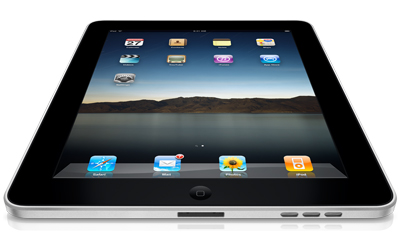This post has not been edited by the GamesBeat staff. Opinions by GamesBeat community writers do not necessarily reflect those of the staff.
Editor's note: Steam has been out on the Mac for two months now. Has it been the game-changer people hoped it would be? Richard doesn't think so, and he offers some compelling reasons why. -Brett

When this article was originally published (elsewhere), Steam had been publicly available to Mac users for a matter of hours. The library of Mac games on the service has since swelled to around 100 titles, including native ports of Valve flagship titles like Portal, Team Fortress 2, and Half-Life 2.
Many people are taking it for granted that the Mac is now a viable gaming platform. I beg to differ, for none of my concerns have been met. I ask now, just as I did two months ago, is Steam for Mac really a game-changer?
No — at least, not yet.
Let me explain.
Steam revolutionized PC gaming. It transformed online multiplayer and content delivery and overhauled the existing retail-focused distribution networks, breathing new life into a declining platform. It’s now estimated to account for around 70 percent of the digital distribution market.
Some people seem to think this success will directly transfer to the Mac platform, revitalizing Mac gaming. Unfortunately, it isn’t this simple. The Mac gaming market is a very different beast to its PC counterpart, and Steam may find an uphill battle in this world.
Here’s why:
Digital distribution is king in the world of Mac software.
Mac software provides much lower sales per square inch of shelf-space than Windows or console products. So retailers simply don’t stock it. This has been the case for around 15 years — even Apple stores stock only a very small range of software and games. In the online world there is infinite shelf-space. Digital distribution has thus been the de facto standard for Mac software since the late 1990s.
This is where Steam faces its biggest challenge. On the PC, it revolutionized content delivery, removing the need for a boxed product bought from the local electronics or video game store. But the Mac has never had that retail pull. Digital distribution is not an alternative, but rather the conventional sales model of Mac software. Valve may be preaching to the converted. And their calls may fall on deaf ears.

Is Steam actually innovative in the eyes of Mac users? I'm not so sure.
For most Mac users, Steam is just another digital distribution platform — except with the disadvantage of a non-native UI that will frustrate many users. It must compete with several similar services in addition to the companies actually making (and publishing) the games, which typically offer titles directly from their company website.
To beat these other players, Steam must provide a better service, more games, and cheaper prices. Each of these will take time accomplish, especially given that the existing (digital) methods of sale draw a disproportionate share of Mac purchases, and that, for all its success and popularity on the PC, some Mac gamers have never heard of Steam.
Where are the games?
The news that much of Valve’s highly successful back-catalog of games (and its upcoming titles) will run natively on the Mac is a huge step forward for getting more games on the Mac. But it’s not enough.
The Mac needs more commercial games, and they need to match their PC counterparts on features, performance, and release date. The early signs are encouraging, but the announcements need to keep on coming.
As things stand, most games available for OS X fall under the “casual” descriptor. Valve’s planned strategy of teasing games out slowly — in order to showcase specific Steam functions and features –is not going to help break the common perception that the Mac has no games (especially now that it has slowed to a trickle).
Apple may be a problem.
Apple has always had a somewhat tenuous relationship with game developers. Concerns about whether they care about gaming on the Mac stem mostly from two factors.
In the late 1990s, a rejuvenated Apple led by Steve Jobs threw support behind OpenGL and other technologies that looked to be the future of gaming on the Mac. They persuaded id Software to release the Mac and PC versions of Quake 3 simultaneously, while Bungie announced Halo at the 1999 Worldwide Developers Conference, promising that it would bring Mac gaming to the mainstream.
It never happened.

We’ve been burned before.
Microsoft bought Bungie, and Halo was released as the flagship title for the Xbox in 2001 (a Mac port eventually surfaced in 2003). Feeling shafted, many Mac gamers blamed Bungie’s defection on a lack of support from Apple. The fact that other developers and publishers — such as LucasArts and Valve –dropped their Mac development efforts around this time did nothing to dissuade them.
Apple has since lagged behind in driver updates and relevant graphics libraries, and, perhaps most tellingly, offered next-to-no advertising or marketing support to games on the Mac.
Instead, they have increasingly focused on the iPod, iPhone, and iPad. It is no longer clear that Apple is serious about maintaining the Mac platform in the long term. The Mac certainly isn’t bringing in the same money or attention as Apple’s iPhone OS devices.
Some developers and publishers may hesitate in throwing their weight behind Mac games if they think the Mac is getting second-class treatment from its creator, while many Mac gamers defected to consoles long ago and will be hard to win back. It can’t help that Mac market is at best 10-15 percent of the total PC games market, or that a sales total of 25,000 might be considered a success even for commercial Mac games. And this is not just for the obvious reason (that smaller market share leads to smaller potential sales): it also extends to the fragmentation of the audience.

Mac killer?
When all is said and done, Steam is just one more way to buy games on the Mac. As a result, it may actually become harder to determine the size of the Mac gaming audience, leading risk-averse publishers to be even more cautious in releasing Mac-native games.
Although Valve has made things much easier by porting Steamworks and the Source engine, the reality is that many developers will have to learn entirely new toolsets, discover new optimization techniques, and migrate from DirectX to OpenGL.
Adding Mac support to the development cycle is far from trivial, and may be considered more trouble than it’s worth, even with the work Valve has done to help. It will take initiative from one of the big players (EA, Ubisoft, Activision Blizzard), and clear and unambiguous support from Apple, before a majority of PC games get Mac-native versions.
What lies ahead?
If the pieces do fall into place, Mac gaming will enjoy a healthy future as a true “tier 1” platform, with most major — and some minor — releases receiving a Mac-native version alongside the PC version. Additionally, Mac market share will rise, as what for many potential “switchers” is the final obstacle to buying a Mac disappears. Apple will finally treat Mac gaming seriously, providing advertising, up-to-date graphics drivers and development libraries, and gaming-focused hardware SKUs. And Steam will extend its dominance of the digital distribution sphere (for better or worse).
Otherwise, it will be business as usual for Mac gaming, which has been creeping forward in yearly releases and mind-share (particularly on the indie scene).
There is no doubt that Steam for Mac is a good thing. Just don’t expect the Mac to suddenly become the flavor of the week. With a bit of luck, Steam will be the first in a series of minor victories that together lead to a golden age in Mac gaming.
But don’t hold your breath. It will take a while.
Originally published on Australian Macworld.
